#FlutterDevelopers
Explore tagged Tumblr posts
Text
Android App Development in Hosur – Hosur Softwares | Custom Mobile Solutions
Looking for expert-level Android app development in Hosur? Hosur Softwares is your trusted local partner for building powerful, scalable, and user-centric Android applications. From idea to launch, we offer complete app development services tailored to your business goals.

We help startups, retailers, educational institutions, and enterprises in Hosur and beyond turn their app ideas into reality using the latest technologies like Java, Kotlin, Flutter, and Firebase.
🔗 Explore our services: https://hosursoftwares.com
Native Android App Development
Our team builds robust Android applications using Java and Kotlin that deliver high performance and seamless functionality across all Android devices.
Cross-Platform Android Apps
Using Flutter and React Native, we develop apps that work smoothly across Android and iOS with a single codebase—saving you time and cost while ensuring consistent performance.
Android Apps for Businesses
From eCommerce platforms to service booking apps and customer portals, we create tailor-made Android apps that help businesses manage users, payments, inventory, and more.
User-Friendly UI/UX Design
We focus on crafting clean, engaging interfaces that enhance user experience, reduce bounce rates, and increase app usage through modern design and intuitive navigation.
Play Store Launch & Support
We don’t just build apps—we help you launch them! Our team handles app store compliance, APK generation, deployment, and regular updates post-launch.
Secure & Scalable Architecture
Security is built into every layer of your app, with secure login, data encryption, and performance optimization to ensure long-term reliability and scalability.
Industries We Serve
Retail & E-commerce
Healthcare
Education & e-Learning
Logistics
Real Estate
Local Service Providers
Why Choose Hosur Softwares?
Local expertise with a dedicated team
Transparent pricing and on-time delivery
Post-launch support and version upgrades
100% client satisfaction track record
📞 Let’s Build Your Android App Today
Whether it’s your first app or an upgrade to an existing system, we can help. 🔗 Contact us at: https://hosursoftwares.com
#AndroidAppDevelopment#AndroidDevelopers#HosurTech#AppDevelopmentHosur#MobileAppDevelopment#CustomAppSolutions#AndroidExperts#TechCompanyInHosur#HosurSoftwareCompany#DigitalSolutionsHosur#FlutterDevelopers#JavaDevelopers#MobileSolutionsIndia#StartupAppsHosur#BusinessAppsHosur
0 notes
Text
App Development in Bangalore: Why Startups & Enterprises Choose Hello Errors for Mobile Innovation

In the dynamic ecosystem of India’s Silicon Valley, app development in Bangalore has transformed into a booming sector. Whether it's a bootstrapped startup or a scaling enterprise, businesses today are investing heavily in mobile applications to connect with customers, streamline operations, and unlock new revenue streams.
At the center of this transformation is Hello Errors, a Bangalore-based tech powerhouse known for crafting innovative, scalable, and market-ready mobile apps. Let's dive deep into why Hello Errors is becoming the preferred technology partner for businesses across sectors.
The Rise of Mobile-First Businesses in Bangalore
Bangalore has become a magnet for tech entrepreneurs, venture capital, and software talent. As more businesses shift their strategies toward digital-first models, mobile apps are no longer optional—they’re essential.
From food delivery apps and fintech platforms to healthcare tech and hyperlocal services, mobile-first innovation is everywhere. This growing demand has made app development in Bangalore not just a trend, but a business imperative.
Key market drivers:
Surging smartphone penetration in Tier 1 and Tier 2 cities
Increased internet accessibility (thanks to 5G rollout)
A growing digital consumer base with high app usage
Rising investments in tech-driven startups
In such a vibrant environment, Hello Errors is helping brands bring their app ideas to life with unmatched speed and precision.
Who Is Hello Errors?
Hello Errors isn’t just another app development company—it’s a strategic digital partner committed to building solutions that solve real problems and deliver measurable results.
What sets Hello Errors apart:
Deep focus on user-centric design
Fast, iterative agile development cycles
AI/ML, SEO, and UI/UX baked into the process
Cross-platform app development with advanced frameworks
Transparent communication and full-cycle support
Their mission is simple: Help clients get established and grow on digital platforms—starting with world-class mobile apps.
Startup-Friendly Approach: Fast MVPs and Market Testing
One of Hello Errors' standout offerings is its startup-focused MVP (Minimum Viable Product) development model. For entrepreneurs with tight budgets and big visions, this is a game-changer.
Key benefits of MVP-first app development:
Rapid time to market
Cost-efficient prototyping
Real-user feedback loops
Easier to pivot based on market demand
With a strong presence in the startup capital of India, Hello Errors understands the importance of speed-to-market and scalability. Their agile teams can take an idea from wireframe to App Store in record time—an essential trait in the competitive landscape of app development in Bangalore.
Cross-Platform & Native App Solutions
Hello Errors builds both native and cross-platform mobile apps using modern frameworks and technologies that ensure performance, flexibility, and future-readiness.
Technology stack includes:
React Native – for seamless iOS & Android apps with shared codebase
Flutter – for beautiful UIs and fast performance
Swift & Kotlin – for high-performance native experiences
Firebase & AWS – for scalable backend infrastructure
Node.js, Python, MongoDB – for custom backend logic
Whether you're building an eCommerce app, a SaaS product, or an internal business tool, Hello Errors tailors the tech stack to fit your use case perfectly.
Security, Scalability & Support – Built In
In today’s world, security is non-negotiable. Hello Errors prioritizes secure coding practices and data protection in every app they develop. With encrypted APIs, secure payment integrations, and GDPR-compliant development practices, you can rest easy knowing your app is built on solid foundations.
They also plan for scalability from day one. This ensures that your app can handle spikes in traffic, user growth, and feature expansion without performance bottlenecks.
And once your app is live, Hello Errors doesn’t just disappear. Their dedicated support team provides post-launch maintenance, analytics tracking, and performance tuning.
Local Advantage: Why Bangalore-Based Businesses Choose Hello Errors
Being based in Bangalore allows Hello Errors to offer some unique advantages:
Proximity to clients for easier collaboration
Deep understanding of local business culture and needs
Access to a vast pool of top-tier tech talent
Collaboration opportunities with other startups and accelerators
If you're a Bangalore-based business or startup looking for local expertise with global standards, Hello Errors is one of the best bets for high-quality app development in Bangalore.
Real-World Results: Success Snapshot
Case Study 1: Hyperlocal Delivery App
A Bangalore startup approached Hello Errors to build a location-based delivery app for groceries. The Hello Errors team launched a functional MVP within 5 weeks using Flutter, integrated live tracking with Google Maps API, and helped the app reach 10K+ downloads within 3 months.
Case Study 2: EdTech Learning App
An educational platform wanted a mobile app to support live classes, quizzes, and progress tracking. Hello Errors developed a React Native app integrated with Zoom and Firebase, resulting in a 40% increase in student engagement.
These examples show how Hello Errors is driving real impact through customized, smart app development strategies.
Final Thoughts: Build Your Next Big App with Hello Errors
The market for app development in Bangalore is competitive—but also full of opportunity. Whether you're launching your first startup or transforming your enterprise systems, your mobile app is more than just a digital tool—it's the core of your business.
At Hello Errors, we combine technology, creativity, and strategy to build apps that are ready for the present—and the future. We don’t just code—we create impact.
📱 Ready to build your app?
Let’s connect. Visit www.helloerrors.in or reach out to schedule a free strategy call with our app experts.
#AppDevelopmentInBangalore#HelloErrors#BangaloreTechStartups#MobileAppDevelopmentIndia#ReactNativeApps#FlutterDevelopers#StartupApps#UXDesignBangalore#MVPDevelopment#AIinApps#DigitalTransformationIndia
0 notes
Text
Do you want to hire dedicated Flutter app developers for your project?

Hire Flutter Developers with expertise in building high-performance, scalable, and visually stunning applications that perfectly match your project’s requirements. Whether you’re developing for mobile, web, or desktop, our team ensures top-quality results every time. Hire a dedicated Flutter app developer now!
#hireflutterdev#hireflutterdevelopers#flutter#flutterdeveloper#mobileappdevelopment#flutterdevelopers#flutterappdevelopers#flutterappdevelopmentcompany#flutterappdevelopmentcost#flutterdeveloperhourlyrate
0 notes
Text
Hire iOS App Developers in USA & Top Web Experts Nationwide
In today's digital world, businesses need great, easy-to-use apps to connect with their audience. Hiring iOS app developers in the USA is a smart choice for building a standout iOS app. Many companies also need developers skilled in other platforms like WordPress, Angular, Vue.js, Flutter, and Node.js to support apps across different platforms.
This guide will help you find and hire the right developers for these platforms so your project runs smoothly from start to finish.

Why Hire iOS App Developers in the USA?
Hiring iOS developers in the USA provides businesses with access to top-tier talent that combines technical skills with an understanding of user experience and local market trends. Here's what a skilled iOS developer from the USA brings to the table:
Knowledge of the US Market: Local developers understand what American users want, so they can create apps that match their preferences.
High Quality and Standards: Experienced iOS developers make sure apps meet Apple's quality, privacy, and performance standards.
Accessible Communication and Quick Support: Being in the same time zone makes it easier to communicate and get fast support.
To get started on your app development journey with experienced iOS developers, visit Hire iOS App Developers in the USA.
Hire WordPress Developers in San Francisco for Scalable, Flexible Websites
WordPress is the go-to platform for businesses seeking a robust online presence due to its adaptability and ease of use. Hiring WordPress developers in San Francisco allows companies to create customized websites tailored to specific needs. Here are the key benefits of hiring experienced WordPress developers:
Easy Content Management: WordPress has a simple interface that lets businesses manage and update content without needing advanced technical skills.
Customization with Plugins: Skilled developers can use plugins and themes to create a unique website that fits your brand.
Improved SEO: Experienced WordPress developers follow SEO best practices to help your site rank higher and become more visible in search results.
For a highly optimized, user-friendly WordPress site, consult Hire WordPress Developers in San Francisco.
Hire Angular Developers in Los Angeles for Dynamic Web Applications
Angular is an ideal framework for building fast, interactive single-page applications (SPAs). By choosing to hire Angular developers in Los Angeles, you can achieve responsive and visually engaging applications. Key benefits of working with Angular developers include:
Two-Way Data Binding: Angular's two-way binding keeps the model and view synchronized, creating a smooth and dynamic user experience.
Enhanced Speed and Performance: Angular applications load quickly, enhancing the overall user experience.
Intuitive User Interfaces: Skilled Angular developers can craft visually appealing, user-centric interfaces that are easy to navigate.
For dynamic, visually engaging applications, visit Hire Angular Developers in Los Angeles.
Hire Vue.js Developers in San Francisco for High-Performance Front-End Solutions
Vue.js is a flexible and progressive JavaScript framework ideal for building intuitive, high-performance user interfaces. Opting to hire Vue.js developers in San Francisco allows for the creation of scalable front-end solutions that prioritize user experience. Here's how Vue.js developers can enhance your project:
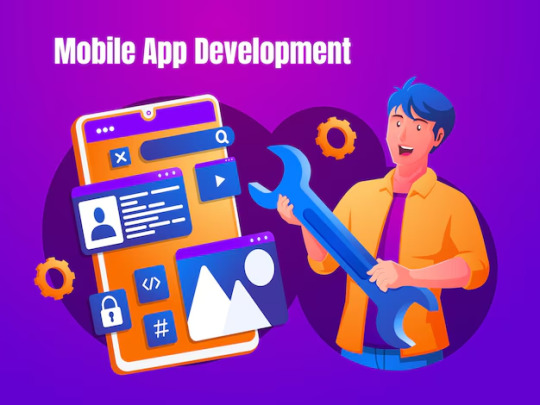
Component-Based Architecture: Vue.js enables reusable code components, simplifying updates and improving scalability.
Easy Integration: Vue.js integrates easily with existing projects, adding functionality without complex reworking.
User-Centric Interfaces: Vue.js is designed to build interactive UIs that engage users, making it an excellent choice for front-end development.
For an engaging, high-performance UI, consider hiring Vue.js developers in San Francisco.
Hire Flutter App Developers in San Francisco for Cross-Platform Excellence
Flutter, Google's UI toolkit, enables cross-platform app development from a single codebase, allowing for apps that run seamlessly on mobile, web, and desktop. Hiring Flutter app developers in San Francisco offers several advantages:
Cross-Platform Development: With Flutter, developers can create a single app that works on iOS, Android, and the web, saving time and costs.
Fast Development Process: Flutter's hot reload feature speeds up development, allowing for easy UI and functionality changes.
Consistent User Experience: Flutter ensures a uniform experience across devices, supporting brand consistency.
For versatile, multi-platform app development, connect with Hire Flutter App Developers in San Francisco.
Why Choose the Best Node.js Developers for Custom App Development?
Node.js is widely known for building scalable, high-performance server-side applications, making it ideal for data-heavy or real-time applications. Here's why working with the best Node.js developers can enhance your project:
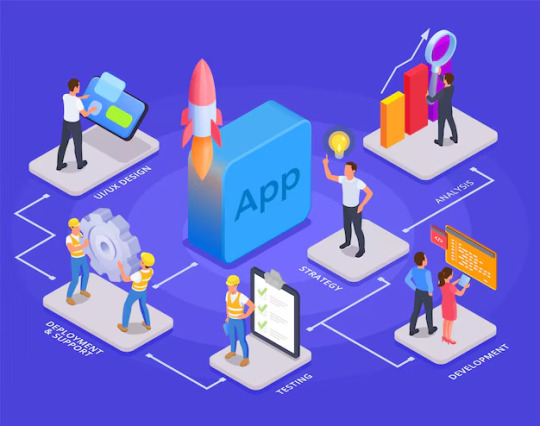
High Performance and Scalability: Built on Google's V8 engine, Node.js is ideal for handling multiple requests simultaneously, perfect for applications that manage high data loads.
Asynchronous and Event-Driven Architecture: This architecture enables fast request handling, improving application speed and responsiveness.
Single Codebase for Server and Client: Node.js allows developers to use JavaScript across the server and client sides, creating a cleaner, easier-to-manage codebase.
For custom, high-performance applications, explore the Best Node.js Developers for Custom App Development.
How to Choose the Right Developer for Your Project
Selecting the right developer requires consideration of your project's specific needs and goals. Here's a step-by-step guide:
Define Project Requirements: Specify your goals, whether it's a single-platform app, a cross-platform solution, or a web application.
Assess Experience and Expertise: Prioritize developers with proven experience and knowledge in the technology you need.
Ensure Flexibility and Support: Choose a team offering post-launch support to keep your app updated and running smoothly.
Align Budget and Timeline: Find developers who fit your budget and can deliver within your desired timeframe.
With specialized developers for iOS, WordPress, Angular, Vue.js, Flutter, and Node.js, businesses can ensure high-quality, successful outcomes.
Conclusion
App and web development are constantly changing, and each platform has its benefits. If you need iOS app developers in the USA or experts in Angular, Vue.js, or Flutter for web projects, hiring the right developer can significantly impact your project's success.
Platforms like WordPress and Node.js also offer special features for building solid and interactive applications. Hiring developers with the right skills for your project ensures a high-quality, efficient, and future-ready solution.
📞 Ready to elevate your business with cutting-edge digital solutions?
Let's talk! Contact us today and discover how Zimble Code can help turn your ideas into reality.
📍 Visit Us: 222 Broadway, New York, NY 10038
📞 Call Us: +1 516-513-4548
📧 Email: [email protected]
Partner with a top-rated company like Zimble Code to ensure your app meets your business goals.
Could you stay Connected with Us?
Follow us on social media to stay updated on the latest trends and insights in mobile app development: Facebook, Instagram, Pinterest
Join the growing list of businesses that trust Zimble Code to deliver high-quality, impactful digital solutions. Together, we'll create something extraordinary! 🌟
#HireiOSDevelopers#iOSDevelopersUSA#WordPressDevelopment#AngularDevelopers#VueJSDevelopers#FlutterDevelopers#NodeJSDevelopment#AppDevelopment#WebDevelopment#CustomAppDevelopment#SanFranciscoDevelopers#LosAngelesDevelopers#ZimbleCode#TechSolutions#HireDevelopers
0 notes
Text
Is Flutter Good for App Development?
Flutter comes to its rescue in this changing mobile industry, where businesses want to target as many audiences as possible with their apps.
It has become popular due to its flexibility, dynamic user interfaces, and cross-platform app development. It offers a native look and feel across devices.
Flutter has become the go-to language for 46% of developers. Top companies, like eBay, Uber, Alibaba, Tencent, and Toyota are powered by Flutter.
If it has worked wonders for these brands, it will do the same for any business seeking global brand visibility.
But, as the Flutter community grows, developers ask: Is Flutter truly a good choice for app development?
Let’s explore.
Flutter- Create Stunning Mobile Experiences
Flutter was developed by Google for their internal usage to simplify the app development process.
It allows Flutter Developers to create amazing natively compiled multi-platform apps using a single codebase, reducing development time and effort.
The primary language used in Flutter is Dart, which is known for its simplicity and efficiency.
Over time, Flutter gets better with different releases and versions.
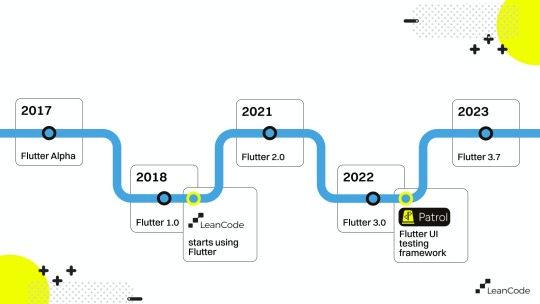
Image Source- https://leancode.co/blog/flutter-pros-and-cons-summary#
What makes Flutter a Go-to Framework for Developers and Businesses?
In a short time, Flutter has proven its worth and has become a preferred tool for beginner as well as experienced developers.
Not only this, it has benefited several businesses to build strong brand visibility. Here are some core features that make Flutter unique.
Hot Reload: A Game-Changing Feature
It is the key feature of Flutter. It lets developers see changes to their code right away without restarting the app.
This speeds up development and makes it easier to experiment and fix problems.
It boosts productivity and provides a smooth development experience.
Consistent and Beautiful UI Across Platforms
Flutter has many customizable widgets. All you need is to find the relevant one, drag-drop it, and voila.
These help developers make good-looking and consistent apps for different devices. It follows Material Design for Android and Cupertino for iOS.
This makes the app look and feel native on both types of devices. It simplifies design and helps users navigate the app easily, no matter what device they use.
Performance That Matters
Performance is key in app development, and Flutter excels here. It compiles directly to native ARM code, so it doesn’t need a JavaScript bridge.
This means apps start faster and animations run more smoothly. Developers praise Flutter for its speed, making it a top choice for demanding apps like games or video streaming.
A Thriving Ecosystem
A strong developer community is key to a framework's success. Flutter has a quickly growing community that helps improve it.
It is the second most popular open-source project from Google, with over 159,000 stars on GitHub.
Flutter offers many packages, plugins, and libraries to add extra features.
The community helps keep these resources updated and available.
Developers can easily find tutorials and solutions to common problems. This encourages teamwork and the sharing of knowledge.

Source- https://leancode.co/blog/flutter-pros-and-cons-summary#
Flutter Advantages for Business
Here are significant reasons that made Flutter a beneficial option for businesses.
1. Cost-effective development
Flutter is a cost-effective choice for building apps compared to other frameworks. It works well for companies of all sizes, meeting various needs.
Flutter allows developers to use one codebase for multiple platforms, which saves time and money.
Small and medium-sized businesses can build fast and functional apps with it.
Because Flutter apps develop quickly, development costs stay low. Recent research shows that 42% of software developers use Flutter.
2. Faster development
Developing complex software is often slow and challenging. Flutter can speed up the process.
A skilled Flutter development firm can help small businesses launch their apps faster than their competitors.
This means businesses can get their apps to market more quickly, saving both time and money.
3. Exceptional user experience
Flutter allows you to create user interfaces that work on any platform. Its unique rendering engine lets developers keep the same UI when switching between platforms, offering a native-like experience on all their devices.
4. Enhanced productivity
Flutter’s Hot Reload feature allows designers and developers to work together smoothly. They can see changes immediately without altering the code.
This lets developers view all UI updates during development, saving both time and effort. Overall, Hot Reload boosts productivity for Flutter app development companies.
5. Flutter’s reactivity
Apps made with Flutter work well on all platforms. Developers can use the same code for different platforms without needing to change it.
Flutter helps create highly responsive apps and saves time by letting developers build for multiple platforms at once.
This extra time can be used to improve app usability. Flutter apps are available for PCs, online platforms, and mobile phones.
You can consult a leading Flutter App Development Company for next-gen Flutter app development.
Also read: Flutter Web Tips
Challenges to Consider
Here are some important things to consider about Flutter's limitations.
New OS Features Delays: New features in operating systems may not be available in Flutter immediately, causing delays.
App Size: Flutter apps might be larger because they include the Flutter engine, though there are ways to manage this.
Web Support: Flutter is better known for mobile apps, and its web support may not be as strong or mature.
Limited Native Features: Some specific device features might not be fully supported by Flutter and may need custom solutions.
Is Flutter Right for You?
Flutter is an all-rounder when it comes to performance, efficiency, and productivity. However, businesses choose Flutter for app development based on the project's needs.
Flutter is ideal for startups and small to medium-sized businesses seeking high-quality apps for both major mobile platforms with less resources and investment.
If you need quick development, a great-looking user interface, and good performance, Flutter is a strong option.
Its hot reload feature lets you see changes instantly, its design is consistent, and its active community makes development easier and more efficient.
However, large companies with existing native development teams and complex codebases should think carefully before switching to Flutter.
It's important to consider your project's specific needs and balance Flutter's benefits with any potential challenges.
How OnGrah Can Improve Flutter App Development?
There is no doubt about Flutter’s promise to deliver dynamic user experiences. On top of it, businesses can use Flutter to build cross-platform visibility with a single codebase, reducing costs and increasing productivity. What else a business could want?
From the developer’s perspective, it is a feature-packed framework that improves their productivity with less development time and effort.
So it's a win-win option for everyone. If you want to make an impact in the app industry, connect with OnGraph for advanced Flutter App Development Services.
Content Source URL: https://telegra.ph/Is-Flutter-Good-for-App-Development-09-12
#flutterappdevelopmentcompany#flutterdevelopmentcompany#flutterbackend#hireflutterappdevelopers#hireflutterdevelopers#flutterdevelopers
0 notes
Text
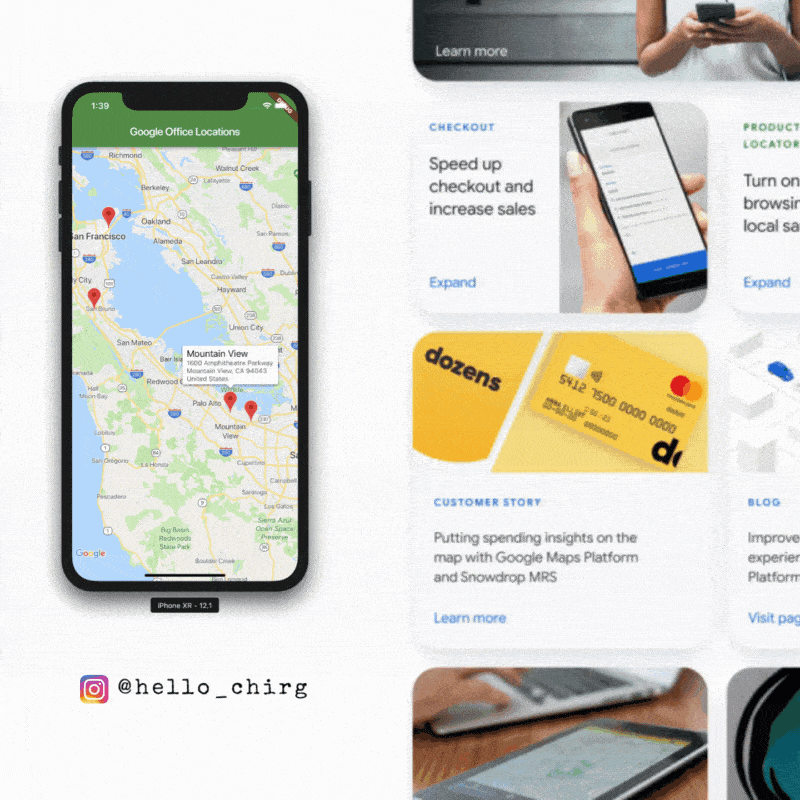
Integrating Google Maps in a Flutter App: Step-by-Step Guide | Striver technosoft
Step-by-step guide to integrating Google Maps in Flutter apps with API key setup, map customization, and advanced features.
0 notes
Text
0 notes
Text

Fix Flutter UI Bugs with Our Expert Solutions!
Struggling with UI bugs in your Flutter app? Our experienced team is here to help you identify and fix these issues, ensuring your app runs smoothly.
Reach out for a FREE Consultation and let us help you improve your app’s performance.
#connectinfosoft#flutterdevelopment#uibugs#appsupport#freeconsultation#techexperts#flutterservice#flutterexperts#flutterteam#flutterdev#fluttercompany#flutterdevelopers#flutterapps#flutterappdevelopment#hireflutterdevelopers#flutterconsulting#fluttersolutions#flutterframework#flutterprogramming#fluttercommunity#mobileappdevelopment#crossplatformdevelopment#flutterui#fluttertechnology#flutterspecialists#flutteragency#flutterpro#flutterprojects#flutterintegration#flutterdesign
1 note
·
View note
Text
What Challenges have you faced when Hiring Flutter Developers, and how did you overcome them?
Hiring Flutter developers can present unique challenges, but with the right approach and strategies, these obstacles can be overcome effectively. Here are common challenges faced when hiring Flutter developers and actionable solutions to address them:
1. Limited Pool of Experienced Developers
Challenge: Finding experienced Flutter developers can be challenging due to the relatively recent emergence of Flutter in the mobile development landscape.
Solution: Expand your search to include developers with strong experience in related technologies or those with a solid background in Dart programming language. Consider providing training or upskilling opportunities to promising candidates.
2. Assessing Technical Skills and Proficiency
Challenge: Evaluating the technical skills and proficiency of Flutter developers can be difficult, especially for non-technical hiring managers.
Solution: Utilize technical assessments, coding challenges, and real-world project evaluations during the interview process. Engage experienced Flutter developers or consultants to assist in assessing candidates' technical abilities.
3. Competition for Talent
Challenge: There is fierce competition for skilled Flutter developers, leading to longer recruitment cycles and potential candidate dropouts.
Solution: Enhance your employer brand by showcasing exciting Flutter projects, emphasizing career growth opportunities, and offering competitive compensation packages. Act swiftly during the hiring process to secure top talent before they accept competing offers.
4. Remote Hiring and Collaboration
Challenge: Hiring remote Flutter developers requires effective communication and collaboration strategies to ensure project success.
Solution: Leverage video interviews, online collaboration tools (e.g., Slack, Trello), and project management software to facilitate seamless communication and collaboration with remote developers. Establish clear expectations, workflows, and reporting structures upfront.
5. Cultural Fit and Team Dynamics
Challenge: Ensuring cultural fit and compatibility with existing team dynamics can be crucial for long-term success.
Solution: Incorporate behavioral interviews and team-based assessments to evaluate candidates' soft skills, communication styles, and ability to collaborate effectively within your team culture. Involve key team members in the interview process to assess candidate-team fit.
6. Managing Freelancers or Contractors
Challenge: Integrating freelancers or contractors into your Flutter development team requires effective project management and communication.
Solution: Define clear project scopes, deliverables, and timelines when engaging freelancers. Establish regular check-ins, milestones, and progress reviews to ensure alignment with project objectives and timelines.
7. Continuous Learning and Growth
Challenge: Staying updated with Flutter's evolving ecosystem and best practices is essential for hiring managers and development teams.
Solution: Encourage continuous learning and professional development among your Flutter developers through workshops, webinars, online courses, and participation in Flutter community events. Invest in resources and tools to support ongoing skill enhancement.
By proactively addressing these challenges with strategic hiring practices and fostering a supportive environment for Flutter developers, businesses can build a talented and cohesive team capable of delivering exceptional Flutter-based mobile applications. Effective recruitment strategies coupled with ongoing support and development opportunities contribute to attracting and retaining top Flutter talent in a competitive market.
#hireflutterdevelopers#flutterdevelopers#findflutterdevelopers#flutterapp#fluttermobileapp#benefitsofusingflutter#flutterframework#flutterappdevelopment#dedicatedflutterdevelopers#bestflutterdevelopers#hireflutterexperts
0 notes
Text



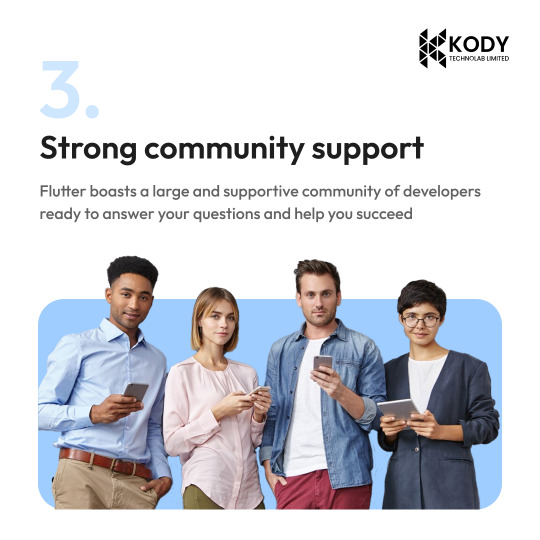


CEOs & CTOs: Struggling to balance app development costs and launch timelines?
Don't worry! This guide reveals why Flutter can be your winning strategy! It will equip you with the undenieable benefits and advantages of Flutter for your app development strategy.
Ready to explore ways to streamline development, reach a wider audience, and potentially cut costs?
Click the link to access the full guide and discover the power of Flutter!
#Flutter#Crossplatform#AppDevelopment#Framework#FlutterApps#FlutterTechnology#FlutterDevelopers#CEO#CTO#MobileAppFrameworks#MobileAppDevelopment#FlutterFramework#FlutterCommunity#TechTrends2024#SaveMoney#StrongCommunity#FlutterisFuture
0 notes
Text
Key Features of Flutter
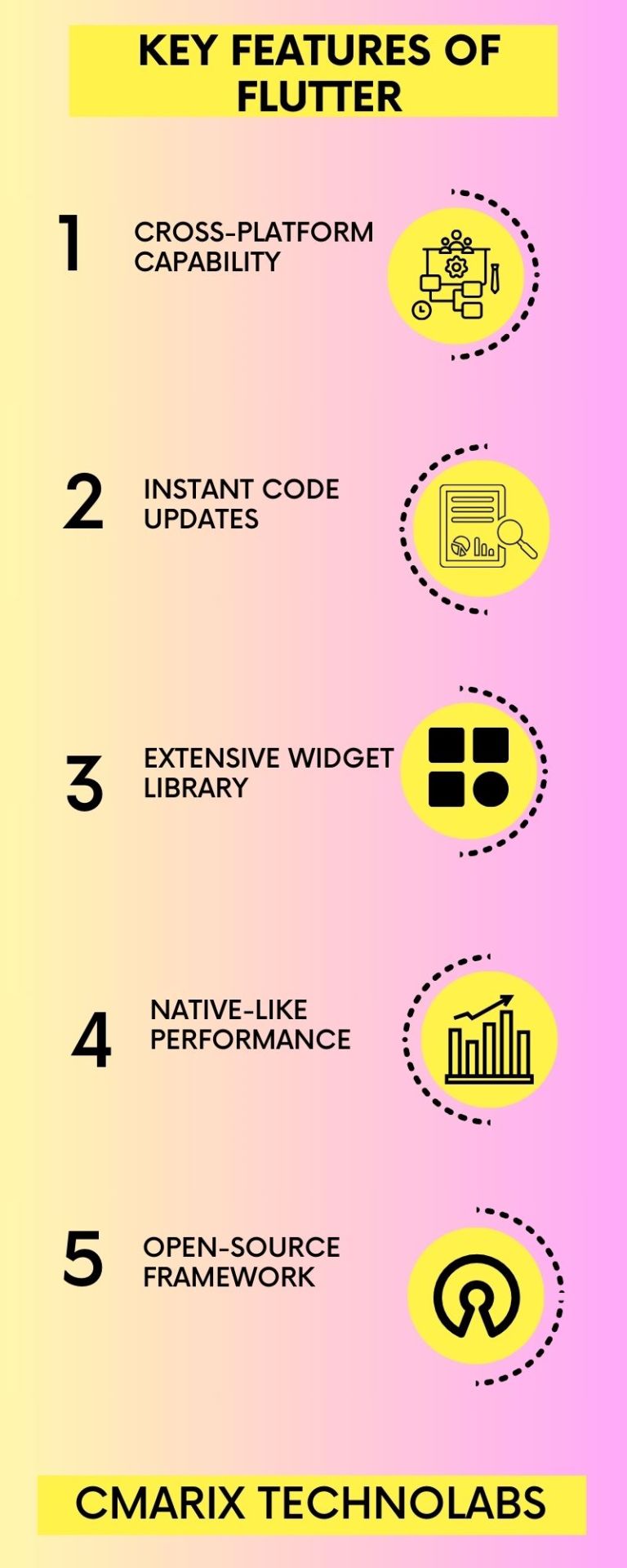
Flutter's Hot Reload, Cross-Platform Efficiency, Rich Widgets, and Strong Community Support make it the ultimate choice for high-performance app development.
1 note
·
View note
Text

✨ Welcome Aboard, Jignesh! ✨
We’re thrilled to have Jignesh Rathod join our team for Flutter App Development industrial training!
At MDIDM INFOWAY, we believe in empowering young talents with hands-on experience, live projects, and expert mentorship. With his dedication and passion for app development, Jignesh is all set to embark on an exciting professional journey!
Join us and take the first step toward a successful tech career!
DM us for training inquiries! www.mdidminfoway.com 📞 +91 83471 93531
MDIDMInfoway
#FlutterDevelopment#AppDevelopment#IndustrialTraining#TechCareers#CodingLife#InternshipOpportunity#WelcomeJignesh
2 notes
·
View notes
Text

Reach out to global tattoo artists 🎨 and enthusiasts. Explore the Tat Mate Flutter-Based App for Tattoo Studios.
Connect 🤝 customers with nearby tattoo artists by building an online tattoo appointment booking app using the Tat Mate frontend solution.
✅ Easy appointment booking ✅ Chat option ✅ Tattoo artist details ✅ Android and iOS compatible
Visit Now: https://allclonescript.com/product-detail/tattoosbit-flutter
#app development#flutterdeveloper#flutterapp#flutter#tattoo#tattooapp#tattooartist#tattooart#tattoobusiness#tattoobusinessapp#tattoodesign#tattooflutterapp#mobileapp#androidapp
2 notes
·
View notes
Text
DevOps for Mobile: CI/CD Tools Every Flutter/React Native Dev Needs

Does shipping a new version of your mobile app feel like orchestrating a mammoth undertaking, prone to late nights, manual errors, and stressed-out developers? You're not alone. Many teams building with flexible frameworks like Flutter and React Native grapple with antiquated, laborious release processes. The dynamic landscape of mobile demands agility, speed, and unwavering quality – traits often antithetical to manual builds, testing, and deployment. Bridging this gap requires a dedicated approach: DevOps for Mobile. And central to that approach are robust CI/CD tools.
The Bottlenecks in Mobile App Delivery
Mobile application programming inherently carries complexity. Multiple platforms (iOS and Android), diverse device types, intricate testing matrices, app store submission hurdles, and the constant churn of framework and SDK updates contribute to a multifaceted environment. Without disciplined processes, delivering a high-quality, stable application with consistent velocity becomes a significant challenge.
Common Pitfalls Hindering Release Speed
Often, teams find themselves wrestling with several recurring issues that sabotage their release pipelines:
Manual Builds and Testing: Relying on developers to manually build app binaries for each platform is not only time-consuming but also highly susceptible to inconsistencies. Did you use the right signing certificate? Was the correct environment variable set? Manual testing on devices adds another layer of potential omission and delays.
Code Integration Nightmares: When multiple developers merge their code infrequently, the integration phase can devolve into a stressful period of resolving complex conflicts, often introducing unexpected bugs.
Inconsistent Environments: The "it works on my machine" syndrome is pervasive. Differences in SDK versions, build tools, or operating systems between developer machines and build servers lead to unpredictable outcomes.
Lack of Automated Feedback: Without automated testing and analysis, issues like code quality degradation, performance regressions, or critical bugs might only be discovered late in the development cycle, making them expensive and time-consuming to fix.
Laborious Deployment Procedures: Getting a mobile app from a built binary onto beta testers' devices or into the app stores often involves numerous manual steps – uploading artifacts, filling out metadata, managing releases. This is boring work ripe for automation and error.
The aggregate effect of these bottlenecks is a slow, unpredictable release cycle, preventing teams from iterating quickly based on user feedback and market demands. It's a recalcitrant problem needing a systemic resolution.
What DevOps for Mobile Truly Means
DevOps for Mobile applies the foundational principles of the broader DevOps philosophy – collaboration, automation, continuous improvement – specifically to the mobile development lifecycle. It's about fostering a culture where development and operations aspects (though mobile operations are different from traditional server ops) work seamlessly.
Shifting Left and Automation Imperative
A core tenet is "shifting left" – identifying and resolving problems as early as possible in the pipeline. Catching a build issue during commit is vastly preferable to discovering it hours later during manual testing, or worse, after deployment. This early detection is overwhelmingly facilitated by automation. Automation is not merely a convenience in DevOps for Mobile; it's an imperative. From automated code analysis and testing to automated building and distribution, machinery handles the repetitive, error-prone tasks. This frees up developers to focus on writing features and solving complex problems, simultaneously enhancing the speed, reliability, and quality of releases. As an observed pattern, teams that prioritize this shift typically exhibit higher morale and deliver better software.
Core Components of Mobile App Development Automation
Building an effective DevOps for Mobile pipeline, especially for Flutter or React Native apps, centers around implementing Continuous Integration (CI) and Continuous Delivery/Deployment (CD).
The CI/CD Tools Spectrum
Continuous Integration (CI): Every time a developer commits code to a shared repository, an automated process triggers a build. This build compiles the code, runs unit and integration tests, performs static code analysis, and potentially other checks. The goal is to detect integration problems immediately. A failed build means someone broke something, and the automated feedback loop notifies the team instantly.
Continuous Delivery (CD): Building on CI, this process automatically prepares the app for release after a successful build and testing phase. This could involve signing the application, packaging it, and making it available in a repository or artifact store, ready for manual deployment to staging or production environments.
Continuous Deployment (CD): The next evolution of CD. If all automated tests pass and other quality gates are met, the application is automatically deployed directly to production (e.g., app stores or internal distribution). This requires a high level of confidence in your automated testing and monitoring.
Implementing these components requires selecting the right CI/CD tools that understand the nuances of building for iOS and Android using Flutter and React Native.
Essential CI/CD Tools for Flutter & React Native Devs
The ecosystem of CI/CD tools is extensive, ranging from versatile, self-hosted platforms to specialized cloud-based mobile solutions. Choosing the right ones depends on team size, budget, technical expertise, and specific needs.
Picking the Right Platforms
Several platforms stand out for their capabilities in handling mobile CI/CD:
Jenkins: A venerable, open-source automation server. It's highly extensible via a myriad of plugins, offering immense flexibility. However, setting up mobile builds, especially on macOS agents for iOS, can be complex and require substantial configuration and maintenance effort.
GitLab CI/CD: Integrated directly into GitLab repositories, this offers a compelling, unified platform experience. Configuration is via a `.gitlab-ci.yml` file, making it part of the code repository itself. It's robust but also requires managing runners (build agents), including macOS ones.
GitHub Actions: Tightly integrated with GitHub repositories, Actions use YAML workflows (`.github/workflows`) to define automation pipelines. It provides hosted runners for Linux, Windows, and macOS, making iOS builds simpler out-of-the-box compared to purely self-hosted options. It's become a ubiquitous choice for projects hosted on GitHub.
Bitrise: A cloud-based CI/CD specifically designed for mobile apps. Bitrise offers pre-configured build steps (called "Workflows") and integrations tailored for iOS, Android, Flutter, React Native, and more. This specialization greatly simplifies setup and configuration, though it comes as a managed service with associated costs.
AppCenter (Microsoft): Provides integrated CI/CD, testing, distribution, and analytics for mobile apps, including React Native and Flutter support (though Flutter support might be through specific configurations). It aims for a comprehensive mobile development platform experience.
Fastlane: While not a CI server itself, Fastlane is an open-source toolset written in Ruby that simplifies cumbersome iOS and Android deployment tasks (like managing signing, taking screenshots, uploading to stores). It's almost an indispensable complement to any mobile CI system, as the CI server can invoke Fastlane commands to handle complex distribution steps.
The selection often boils down to the build environment you need (especially macOS for iOS), the required level of customization, integration with your existing VCS, and whether you prefer a managed service or self-hosting.
Specific Flutter CI/CD Considerations
Flutter projects require the Flutter SDK to be present on the build agents. Both iOS and Android builds originate from the single Flutter codebase.
Setup: The CI system needs access to the Flutter SDK. Some platforms, like Bitrise, have steps explicitly for this. On Jenkins/GitLab/GitHub Actions, you'll need a step to set up the Flutter environment (often using tools like `flutter doctor`).
Platform-Specific Builds: Within the CI pipeline, you'll trigger commands like `flutter build ios` and `flutter build apk` or `flutter build appbundle`.
Testing: `flutter test` should run unit and widget tests. You might need device/emulator setups or cloud testing services (like Firebase Test Lab, Sauce Labs, BrowserStack) for integration/end-to-end tests, though this adds complexity.
Signing: Signing both Android APKs/App Bundles and iOS IPAs is crucial and requires careful management of keystores and provisioning profiles on the CI server. Fastlane is particularly useful here for iOS signing complexity management.
Teams observed grappling with Flutter CI/CD often struggle most with the iOS signing process on CI platforms.
Specific React Native CI/CD Considerations
React Native projects involve native build tools (Xcode for iOS, Gradle for Android) in addition to Node.js and yarn/npm for the JavaScript parts.
Setup: The build agent needs Node.js, npm/yarn, Android SDK tools, and Xcode (on macOS). NVM (Node Version Manager) or similar tools are helpful for managing Node versions on the build agent.
Platform-Specific Steps: The CI pipeline will have distinct steps for Android (`./gradlew assembleRelease` or `bundleRelease`) and iOS (`xcodebuild archive` and `xcodebuild exportArchive`).
Dependencies: Ensure npm/yarn dependencies (`yarn install` or `npm install`) and CocoaPods dependencies for iOS (`pod install` from within the `ios` directory) are handled by the pipeline before the native build steps.
Testing: Jest is common for unit tests. Detox or Appium are popular for end-to-end testing, often requiring dedicated testing infrastructure or cloud services.
Signing: Similar to Flutter, secure management of signing credentials (Android keystores, iOS certificates/profiles) is essential on the CI server. Fastlane is highly relevant for React Native iOS as well.
Based on project analysis, React Native CI/CD complexity often arises from the interaction between the JavaScript/Node layer and the native build processes, particularly dependency management (`node_modules`, CocoaPods) and environmental differences.
Implementing a Robust Mobile CI/CD Pipeline
Building your Mobile App Development Automation pipeline is not a weekend project. It requires deliberate steps and iteration.
Phased Approach to Adoption
Approaching CI/CD implementation incrementally yields better results and less disruption.
Phase One: Code Quality and Basic CI
Set up automated linters (e.g., ESLint/Prettier for React Native, `flutter analyze` for Flutter).
Configure CI to run these linters on every push or pull request. Fail the build on lint errors.
Integrate unit and widget tests into the CI build process. Fail the build on test failures. This is your foundational CI.
Phase Two: Automated Building and Artifacts
Extend the CI process to automatically build unsigned Android APK/App Bundle and iOS IPA artifacts on successful commits to main/develop branches.
Store these artifacts securely (e.g., S3, built-in CI artifact storage).
Focus on ensuring the build environment is stable and consistent.
Phase Three: Signing and Internal Distribution (CD)
Securely manage signing credentials on your CI platform (using secrets management).
Automate the signing of Android and iOS artifacts.
Automate distribution to internal testers or staging environments (e.g., using Firebase App Distribution, HockeyApp/AppCenter, TestFlight). This is where Fastlane becomes exceedingly helpful.
Phase Four: Automated Testing Enhancement
Integrate automated UI/integration/end-to-end tests (e.g., Detox, Appium) into your pipeline, running on emulators/simulators or device farms. Make passing these tests a mandatory step for deployment.
Consider performance tests or security scans if applicable.
Phase Five: App Store Distribution (Advanced CD/CD)
Automate the process of uploading signed builds to the Apple App Store Connect and Google Play Console using tools like Fastlane or platform-specific integrations.
Start with automating beta releases to app stores.
Move towards automating production releases cautiously, building confidence in your automated tests and monitoring.
Integrating Testing and Code Signing
These two elements are pragmatic pillars of trust in your automated pipeline.
Testing: Automated tests at various levels (unit, integration, UI, E2E) are your primary quality gate. No pipeline step should proceed without relevant tests passing. This reduces the likelihood of bugs reaching users. Integrate code coverage tools into your CI to monitor test effectiveness.
Code Signing: This is non-negotiable for distributing mobile apps. Your CI system must handle the complexities of managing and applying signing identities securely. Using features like secret variables on your CI platform to store certificates, keys, and keystore passwords is essential. Avoid hardcoding credentials.
Adopting a systematic approach, starting simple and progressively adding complexity and automation, is the recommended trajectory.
Common Errors and How to Navigate Them
Even with excellent tools, teams stumble during DevOps for Mobile adoption. Understanding common missteps helps circumvent them.
Avoiding Integration Headaches
Ignoring Native Layer Nuances: Flutter and React Native abstraction is powerful, but builds eventually hit the native iOS/Android toolchains. Errors often stem from misconfigured native environments (Xcode versions, Gradle issues, signing problems) on the CI agent. Ensure your CI environment precisely mirrors your development environment or uses reproducible setups (like Docker if applicable, though tricky for macOS).
Credential Management Snafus: Hardcoding API keys, signing credentials, or environment-specific secrets into code or build scripts is a critical security vulnerability. Always use the CI platform's secret management features.
Flaky Tests: If your automated tests are unreliable (sometimes passing, sometimes failing for no obvious code reason), they become a major bottleneck and erode trust. Invest time in making tests deterministic and robust, especially UI/E2E tests running on emulators/devices.
Maintaining Pipeline Health
Neglecting Pipeline Maintenance: CI/CD pipelines need attention. Dependency updates (SDKs, Fastlane versions, etc.), changes in app store requirements, or tool updates can break pipelines. Regularly allocate time for pipeline maintenance.
Slow Builds: Long build times kill productivity and developer flow. Continuously optimize build times by leveraging caching (Gradle cache, CocoaPods cache), using faster machines (if self-hosting), or optimizing build steps.
Over-Automating Too Soon: While the goal is automation, attempting to automate production deployment from day one without robust testing, monitoring, and rollback strategies is foolhardy. Progress gradually, building confidence at each phase.
The vicissitudes of platform updates and tooling compatibility necessitate continuous vigilance in pipeline maintenance.
Future Trends in Mobile App Development Automation
The domain of Mobile App Development Automation isn't static. Emerging trends suggest even more sophisticated pipelines in 2025 and beyond.
AI/ML in Testing and Monitoring
We might see greater integration of Artificial Intelligence and Machine Learning:
AI-Assisted Test Case Generation: Tools suggesting new test cases based on code changes or user behavior data.
Smart Test Selection: ML models identifying which tests are most relevant to run based on code changes, potentially reducing build times for small changes.
Anomaly Detection: Using ML to monitor app performance and crash data, automatically flagging potential issues surfaced during or after deployment.
Low-Code/No-Code DevOps
As CI/CD tools mature, expect more platforms to offer low-code or no-code interfaces for building pipelines, abstracting away YAML or scripting complexities. This could make sophisticated DevOps for Mobile accessible to a wider range of teams. The paradigm is shifting towards usability.
Key Takeaways
Here are the essential points for Flutter and React Native developers considering or improving their DevOps for Mobile practice:
Manual mobile release processes are inefficient, error-prone, and hinder rapid iteration.
DevOps for Mobile, centered on CI/CD automation, is imperative for quality and speed.
CI/CD tools automate building, testing, and deploying, enabling faster feedback loops.
Choose CI/CD tools wisely, considering mobile-specific needs like macOS builds and signing.
Platforms like Bitrise specialize in mobile, while Jenkins, GitLab CI, and GitHub Actions are versatile options often enhanced by tools like Fastlane.
Implement your Robust Mobile CI/CD pipeline in phases, starting with code quality and basic CI, progressing to automated distribution and testing.
Prioritize automated testing at all levels and secure code signing management in your pipeline.
Be mindful of common errors such as native layer configuration issues, insecure credential handling, flaky tests, and neglecting pipeline maintenance.
The future involves more intelligent automation via AI/ML and more accessible pipeline configuration through low-code/no-code approaches.
Frequently Asked Questions
What are the key benefits of 'DevOps for Mobile: CI/CD Tools Every Flutter/React Native Dev Needs'?
Adopting CI/CD drastically speeds up mobile development and increases application reliability.
How does 'DevOps for Mobile: CI/CD Tools Every Flutter/React Native Dev Needs' help reduce errors?
Automation within CI/CD pipelines minimizes human errors common in manual build and release steps.
Why is 'DevOps for Mobile: CI/CD Tools Every Flutter/React Native Dev Needs' vital for team collaboration?
CI ensures code integration issues are detected early, fostering better collaboration and less conflict.
Can 'DevOps for Mobile: CI/CD Tools Every Flutter/React Native Dev Needs' apply to small projects?
Yes, even small teams benefit significantly from the stability and efficiency gains provided by automation.
Where does 'DevOps for Mobile: CI/CD Tools Every Flutter/React Native Dev Needs' save the most time?
Significant time savings come from automating repetitive tasks like building, testing, and distributing.
Recommendations
To streamline your Mobile App Development Automation, especially within the dynamic world of Flutter and React Native, embracing CI/CD is non-negotiable for competitive delivery. The choice of CI/CD tools will hinge on your team's particular pragmatic needs and infrastructure. Begin by automating the most painful parts of your current process – likely building and basic testing. Incrementally layer in more sophistication, focusing on solidifying testing and perfecting secure distribution methods. Stay abreast of evolving tooling and methodologies to keep your pipeline performant and relevant. The investment in DevOps for Mobile pays exponential dividends in terms of developer satisfaction, product quality, and business agility. Start planning your CI/CD adoption strategy today and experience the transformation from manual burden to automated excellence. Share your experiences or ask questions in the comments below to foster collective learning.
#DevOps#MobileDevOps#FlutterDevelopment#ReactNative#CI/CD#AppDevelopment#MobileAppDevelopment#FlutterDev#ReactNativeDev#DeveloperTools#SoftwareDevelopment#AutomationTools#MobileDevelopmentTips#ContinuousIntegration#ContinuousDeployment#CodePipeline#TechStack#BuildAutomation#AppDeployment#2025Development
0 notes
Text

Erginous Technologies, based in Rajpura, offers expert-led App Development Training designed to equip students with practical skills in Android, iOS, and Flutter development. Through hands-on projects and real-time learning, trainees gain the confidence to build fully functional mobile applications. The program focuses on industry-relevant tools and techniques to ensure job readiness upon completion. To learn more, visit https://erginous.co.in/ or follow us on Instagram at https://www.instagram.com/erginoustechnologies/ for regular updates and student success stories.
#industrialtraining#industrialtraininginrajpura#industrialtraininginappdevelopment#appdevelopmentindustrialtraining#itcompany#softwarecompany#itcompanyinrajpura#softwarecompanyinrajpura#erginous technologies#training#internships#flutterdevelopment#androiddevelopment#iosdevelopment
1 note
·
View note
Text
#VersatileITSol#AppDevelopmentCompany#TechSolutions#DigitalInnovation#MobileSolutions#GlobalAppServices#AppDevelopersIndia#AppDevelopersUSA#FlutterDevelopment#ReactNativeApps#SwiftDevelopment#KotlinDevelopment#AppUIUXDesign#AppTesting#AppDevelopment#MobileAppDevelopment#CustomAppDevelopment#AndroidDevelopment#iOSAppDevelopment#CrossPlatformApps#NativeAppDevelopment#MobileAppDesign
0 notes